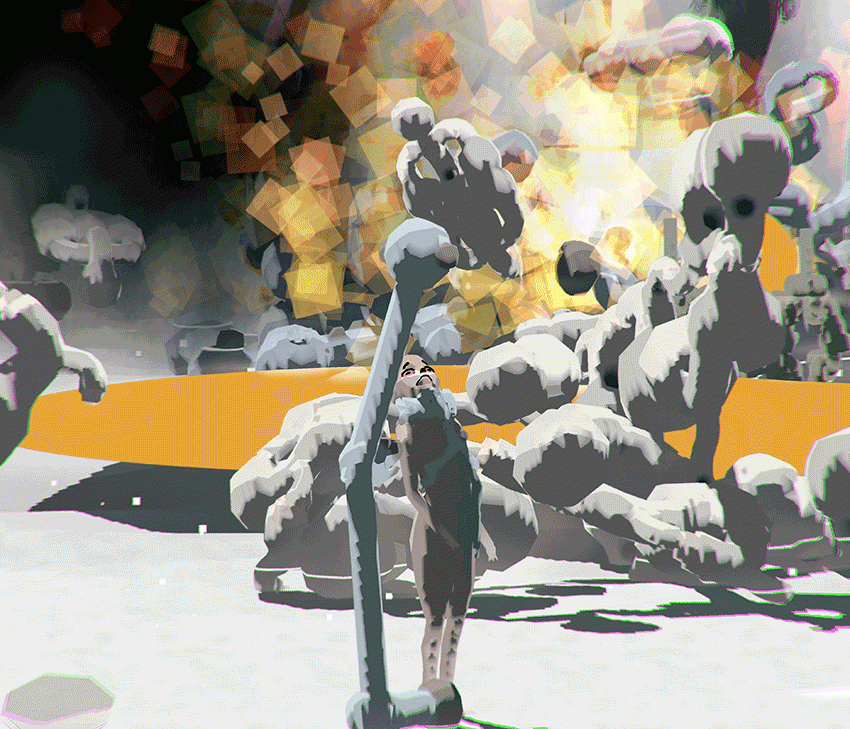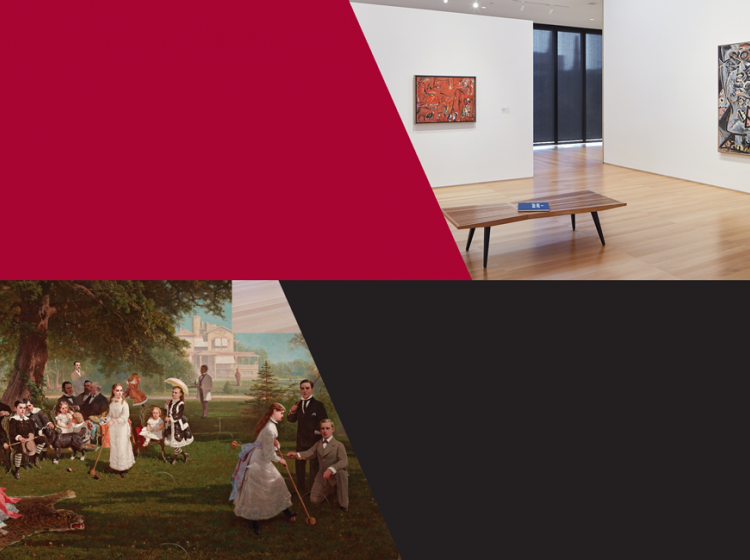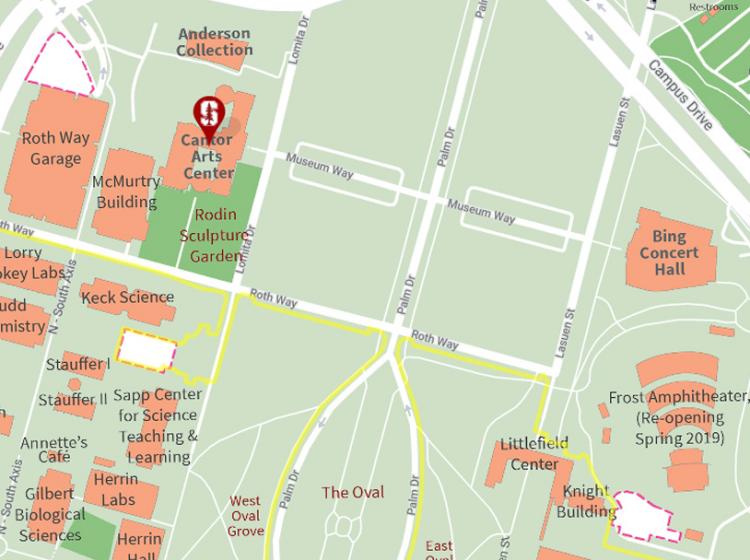Cantor Arts Center
328 Lomita Drive at Museum Way
Stanford, CA 94305-5060
Phone: 650-723-4177

Ian Cheng (American, born in 1984), Emissary Sunsets The Self, 2017. Live simulation and story. Courtesy of the Artist, Pilar Corrias, Gladstone Gallery, Standard (Oslo). William Alden Campbell and Martha Campbell Art Acquisition Fund, 2019.200
Emissary Sunsets The Self explores cognitive evolution and the conditions that shape it. Created with a video game engine, the work generates open-ended animations without fixed outcomes—a format the artist calls “live simulation.” Ian Cheng—who studied cognitive science and art practice—utilizes a range of artificial intelligence (AI) models to mimic humans’ complex brains and enable unpredictable encounters between a character with a narrative goal and an erratic environment.
Emissary Sunsets The Self takes place thousands of years in the future, in an environment governed by a sentient AI. The AI sends a puddle of itself into the bio-layer to experience incarnate life, occasioning the emergence of the emissary puddle’s own self-awareness. While fantastical, Cheng’s artwork demonstrates the value of simulations to making the intricate and complex systems undergirding human life comprehensible.
Emissary Sunsets The Self - version 0.9 (15fps screen capture excerpt) from Ian Cheng on Vimeo.
Ian Cheng (American, born in 1984), Clip from Emissary Sunsets The Self, 2017. Live simulation and story. Courtesy of the Artist, Pilar Corrias, Gladstone Gallery, Standard (Oslo). William Alden Campbell and Martha Campbell Art Acquisition Fund, 2019.200

The Cantor Arts Center is located at the intersection of Museum Way and Lomita Drive in the heart of the arts district on the Stanford campus. The Cantor faces the Bing Concert Hall across Palm Drive, northwest of The Oval and the Main Quad.

Parking is limited. Stanford has a new contactless process to pay for parking, using the ParkMobile app, website, or phone. Prior to your visit, we recommend you visit the Stanford Transportation website to learn more about the updated visitor parking process.
